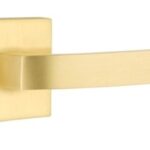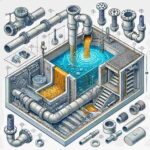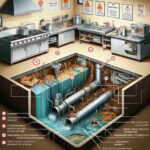Category Archives: Tips
Why is My Grease Trap Smelling? Common Issues and Preventative Measures
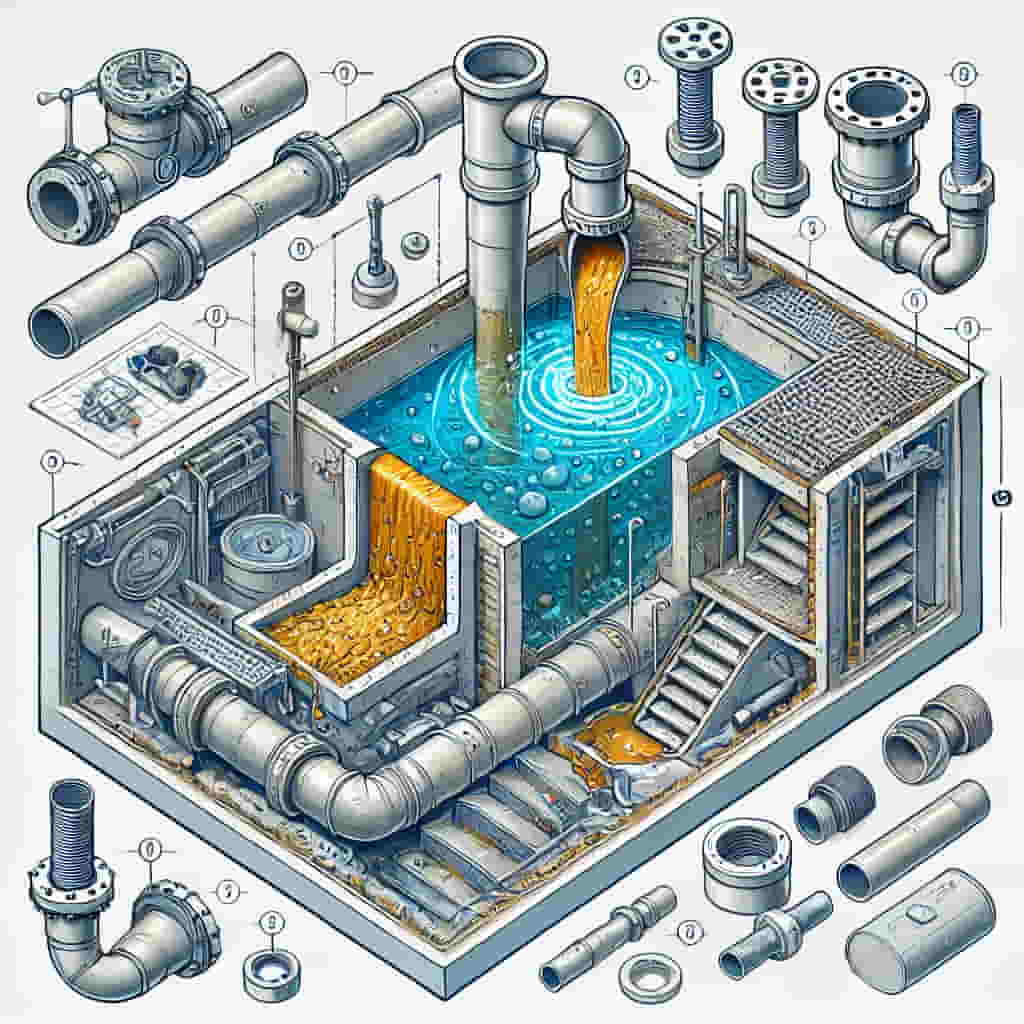
Running a restaurant is no small feat. You’re juggling food quality, customer service, staff management, and, let’s face it, a seemingly endless list of operational concerns. Among these, there’s one unsung hero (or villain, depending on the day) lurking in the back: the grease trap. If your grease trap is beginning to smell like something crawled in and died—well, it’s time to address the issue before it becomes a full-blown crisis. Let’s dive into why your grease trap might be smelling and how you can prevent it from turning your kitchen into a stinky mess.
The Not-So-Sweet Symphony of a Smelly Grease Trap
If you’ve noticed a less-than-appetizing odor wafting from your kitchen, it’s probably your grease trap sounding the alarm. A grease trap’s primary job is to intercept fats, oils, and grease (often referred to as FOG) before they enter the wastewater system. When functioning properly, it quietly collects grease, allowing water to flow through without any issues. But when it starts to smell, it’s like an unwelcome guest who overstays their welcome.
Why Does the Smell Happen?
The stench emanating from your grease trap is likely due to a combination of factors:
- Grease Buildup: Over time, the grease in your trap will accumulate. As it breaks down, it produces sulfuric compounds and fatty acids. These are the culprits behind that rotten egg smell that’s enough to make your eyes water.
- Improper Maintenance: Just like any other equipment in your restaurant, a grease trap requires regular grease trap cleaning. Skipping or delaying cleanings allows grease to build up and can lead to blockages. If left unchecked, it will not only smell but may also lead to more severe plumbing issues.
- Food Particles: Food waste that makes its way into the grease trap can start to decompose, adding another layer of odor. The combination of rotting food and grease is a recipe for a full-on olfactory assault.
- Standing Water: Water that lingers in your grease trap without proper drainage can stagnate and start to smell. This is particularly common if there’s a blockage preventing water from flowing through the system as it should.
- Incorrect Installation or Sizing: Grease traps that are not properly sized for the volume of wastewater your kitchen produces can lead to inefficient grease separation. Similarly, improper installation can cause water to bypass the grease trap, leading to quicker buildup and more frequent odor problems.
Preventing the Stench: The Power of Regular Grease Trap Cleaning
So, how do you keep your grease trap from turning your kitchen into a smelly nightmare? The answer is simple: regular grease trap cleaning.
Here’s why it’s essential:
- Prevent Clogs and Backups: A well-maintained grease trap is less likely to clog. This not only keeps your kitchen running smoothly but also prevents backups that could send foul-smelling water spewing from your drains.
- Avoid Fines and Compliance Issues: Local regulations often require regular grease trap cleaning. Failing to comply can lead to hefty fines and, in some cases, temporary closure of your restaurant. Be sure to check with local authorities regarding specific cleaning frequencies and requirements, as these can vary based on your location and the size of your restaurant.
- Extend the Life of Your Plumbing: Grease and other debris that make their way into your plumbing can cause significant damage over time. By keeping your grease trap clean, you’re protecting your pipes and avoiding costly repairs down the line.
- Protect Your Business’s Reputation: In the restaurant business, a clean environment is paramount. Bad odors are not just unpleasant—they can drive customers away and result in negative reviews. Regular grease trap maintenance helps ensure your restaurant maintains its reputation for cleanliness and professionalism.
- Environmental Responsibility: Regular grease trap maintenance also supports environmental responsibility. Properly maintained grease traps ensure that fats, oils, and grease don’t enter the wastewater system, where they can contribute to environmental pollution. This not only helps prevent sewer blockages but also protects local water sources from contamination.
How Often Should You Clean Your Grease Trap?
The frequency of grease trap cleaning can vary depending on the size of your trap, the volume of grease your kitchen produces, and local regulations. However, a general rule of thumb is to clean your grease trap every one to three months. Some high-volume restaurants may need to clean their traps more frequently, perhaps even monthly.
Local Regulations and Recommendations: It’s crucial to familiarize yourself with local regulations regarding grease trap cleaning. Some municipalities have specific guidelines on how often grease traps must be serviced, and failing to adhere to these can result in fines or other penalties. In some areas, you may be required to maintain records of your grease trap cleanings as proof of compliance.
Signs It’s Time for a Grease Trap Cleaning
Even with a regular schedule, sometimes you need to give your grease trap a little extra attention. Here are some signs that it’s time to call in the professionals for grease interceptor cleaning:
- Foul Odors: If your kitchen smells like a swamp, it’s a clear sign that your grease trap is overdue for a cleaning.
- Slow Draining Sinks: When your sinks are draining slowly, it could indicate a clog in your grease trap.
- Grease Buildup Around Drains: Visible grease around your drains or on the surface of the water in your sinks is a surefire sign that your grease trap is full.
- Grease Overflow: If grease is overflowing from the top of your grease trap, it’s not just time for cleaning—it’s an emergency!
- Increased Pest Activity: Unpleasant odors and food waste accumulation can attract pests like rodents and insects. If you notice an uptick in pest activity around your kitchen, it could be linked to an overdue grease trap.
The Process of Grease Trap Cleaning
Cleaning a grease trap is not a DIY project. It requires professional equipment and expertise. Here’s a quick rundown of what to expect when you hire grease management services:
- Inspection: A professional will start by inspecting your grease trap to assess the level of grease and identify any potential issues.
- Pumping: Using a vacuum truck, the professional will pump out all the grease, water, and debris from the trap.
- Scraping and Cleaning: After pumping, the interior of the grease trap is scraped and cleaned to remove any remaining grease and sludge.
- Inspection and Reassembly: Once cleaned, the grease trap is inspected for any signs of damage. If all is well, it’s reassembled, and freshwater is added to get it back in working order.
- Proper Disposal: The collected grease and waste are then disposed of following local environmental regulations. Some companies even recycle used grease for biofuel, so ask your service provider about their disposal practices.
- Reporting and Documentation: Many professional grease management services provide detailed reports after each cleaning. These reports can be invaluable for maintaining records of compliance with local regulations and for monitoring the effectiveness of your grease trap system over time.
Preventative Measures to Keep Your Grease Trap Fresh
While regular cleaning is critical, there are also several preventative measures you can take to minimize grease buildup and keep your grease trap smelling fresh:
- Scrape Plates Before Washing: Encourage your kitchen staff to scrape food scraps and grease into the trash before washing dishes. The less grease that enters your drains, the better.
- Use Strainers: Install strainers in your sinks to catch food particles before they enter the grease trap.
- Regular Maintenance Checks: Between professional cleanings, have your staff check the grease trap regularly. This can help catch any issues before they become major problems.
- Educate Your Team: Make sure your kitchen staff understands the importance of proper grease disposal and how to maintain the grease trap. A little education goes a long way in preventing issues.
- Install Grease Trap Additives: There are non-toxic, biodegradable additives available that can be introduced into the grease trap to help break down grease more efficiently. While not a replacement for regular cleaning, these additives can help reduce the frequency of professional cleanings by keeping the grease trap functioning more effectively between services.
- Consider Low-Fat Cooking Oils: Using low-fat cooking oils can reduce the amount of grease that ends up in your trap, minimizing buildup and extending the time between cleanings. This can also contribute to healthier menu options for your customers.
- Explore Grease Interceptor Installation: For larger establishments or those producing significant amounts of grease, installing a grease interceptor may be a worthwhile investment. These larger units provide additional capacity for separating grease from wastewater and can be more effective in reducing the frequency of maintenance.
Closing Thoughts
Don’t let a stinky grease trap tarnish your restaurant’s reputation. Regular grease trap cleaning and maintenance are key to keeping odors at bay and ensuring your kitchen runs smoothly. Whether you’ve noticed a smell, slow drains, or just want to be proactive, now’s the time to get your grease trap in top shape. Call in the professionals, educate your staff, and take control of your kitchen’s grease management.
When it comes to grease trap cleaning, an ounce of prevention is worth a pound of cure. Keep that grease trap clean, and your kitchen will thank you. After all, your focus should be on creating delicious dishes, not dealing with greasy odors and clogged pipes.
Troubleshooting Common Issues with Grit Traps: How to Ensure Optimal Performance
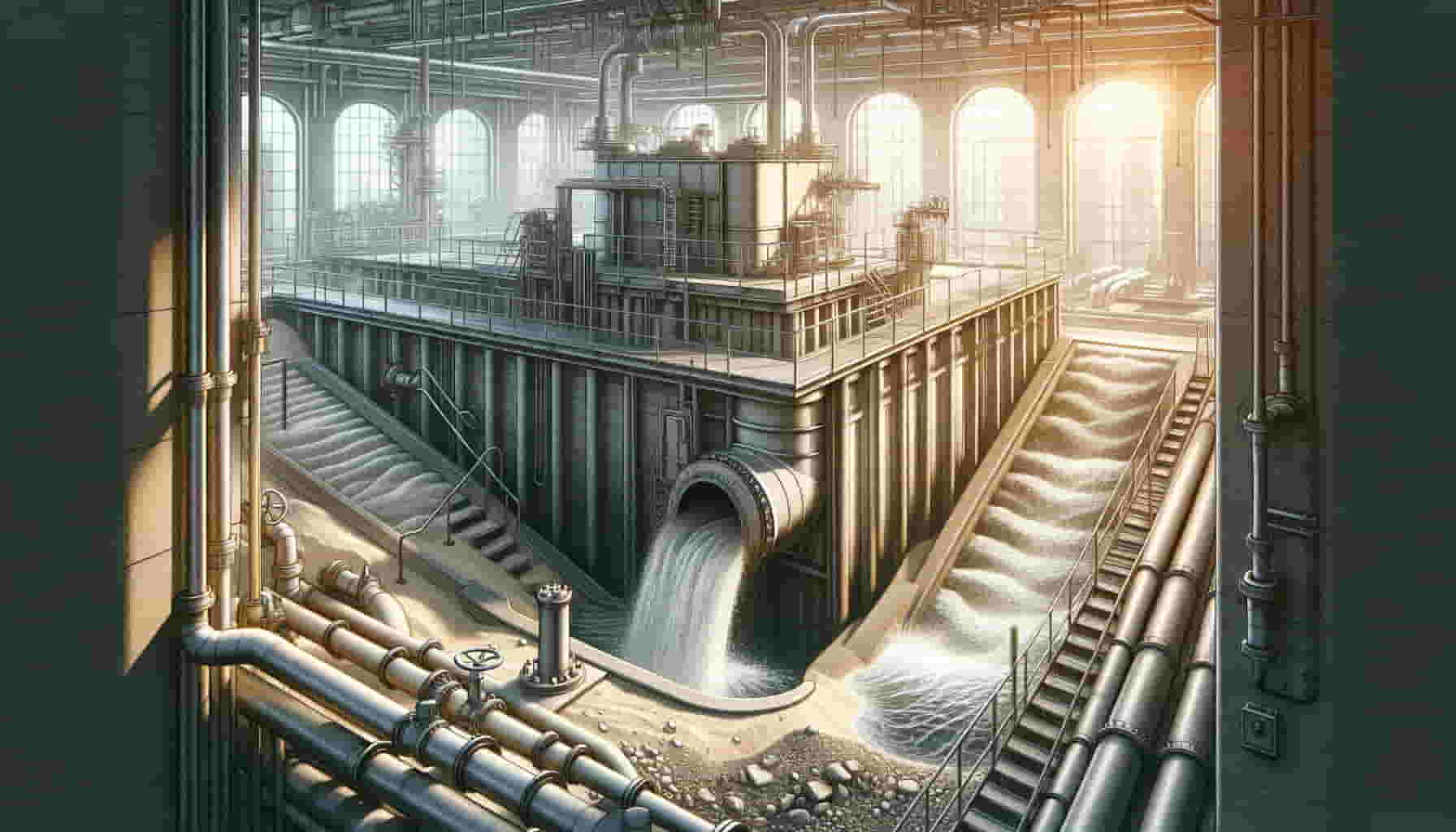
Grit traps are essential components of commercial kitchen drainage systems, designed to capture and retain solid particles, grease, and other contaminants before they enter the main sewage system. These devices play a crucial role in maintaining a clean and efficient kitchen operation, preventing costly blockages, and protecting the environment from harmful pollutants. However, like any mechanical system, grit traps can encounter various issues that may affect their performance. In this article, we’ll explore some of the most common problems associated with grit traps and provide practical solutions to ensure their optimal performance.
Understanding Grit Trap Basics:
Before diving into troubleshooting, it’s essential to understand the fundamental working principles of grit traps. These devices consist of a concrete or plastic tank with multiple chambers, each designed to trap different types of waste. The first chamber, known as the sediment trap, captures heavy solids, such as sand, soil, and other debris. The second chamber, called the grease trap, retains fats, oils, and grease (FOG) by allowing them to cool and solidify. Finally, the third chamber, or effluent trough, collects any remaining contaminants before the wastewater exits the system.
Common Grit Trap Issues and Solutions:
Clogged Inlets and Outlets:
One of the most common grit trap problems is clogged inlets and outlets, which can significantly reduce the flow of water and lead to backups or overflows. Clogs can occur due to the accumulation of food debris, grease buildup, or improper maintenance.
Solution: Regular inspection and cleaning are essential to prevent clogs. Establish a cleaning schedule based on the volume of use and follow the manufacturer’s recommendations for safe and effective cleaning methods. Additionally, consider installing strainers or screens to catch larger particles before they enter the grit trap.
Odor Problems:
Unpleasant odors emanating from grit traps can be a major nuisance and a sign of deeper underlying issues. Odors can result from the buildup of organic matter, inadequate maintenance, or a lack of proper ventilation.
Solution: Address odor problems by ensuring regular cleaning and proper ventilation. Install a vent pipe to allow air circulation and prevent the accumulation of foul-smelling gases. Consider using deodorizing agents or bacterial treatments designed specifically for grit traps to help break down organic matter and neutralize odors.
Grease Buildup:
Grease buildup is a common issue that can significantly reduce the efficiency of grit traps. Over time, grease can solidify and accumulate in the trap, leading to clogs, backups, and decreased flow.
Solution: Implement a comprehensive grease management program that includes regular cleaning, the use of biological or enzymatic grease-degrading agents, and employee training on proper grease disposal practices. Ensure that all kitchen staff understands the importance of minimizing grease discharge and the proper techniques for scraping plates and disposing of grease before washing dishes.
Corrosion and Structural Damage:
Grit traps are subjected to harsh conditions, including exposure to acidic and alkaline substances, which can lead to corrosion and structural damage over time. Cracks, holes, or deterioration of the trap’s material can compromise its effectiveness and pose environmental risks.
Solution: Conduct regular inspections to identify signs of corrosion or structural damage. If issues are detected, consider replacing the affected components or the entire grit trap. Choose corrosion-resistant materials, such as fiberglass or high-density polyethylene (HDPE), for new installations or replacements.
Overflows and Backups:
Overflows and backups can occur when the grit trap becomes overwhelmed by the volume of wastewater, solids, or grease. These issues can lead to flooding, unsanitary conditions, and potential health hazards.
Solution: Ensure that the grit trap is sized appropriately for the volume of wastewater generated by your kitchen. Consider upgrading to a larger or more efficient model if necessary. Additionally, implement a regular cleaning schedule to prevent excessive buildup of solids and grease, which can contribute to overflows and backups.
Ensuring Optimal Grit Trap Performance:
Maintaining the optimal performance of grit traps requires a comprehensive approach that involves regular cleaning, proper maintenance, and employee education. Consider the following best practices:
Develop a Cleaning Schedule: Establish a cleaning schedule based on the volume of use and the manufacturer’s recommendations. Regular cleaning is essential to prevent clogs, odors, and buildup.
Train Employees: Educate kitchen staff on the importance of proper grease disposal, scraping plates, and minimizing the discharge of solids into the drainage system. Proper employee training can significantly reduce the burden on grit traps and extend their lifespan.
Conduct Regular Inspections: Perform regular inspections to identify any issues, such as clogs, structural damage, or excessive buildup of solids or grease. Early detection can prevent more significant problems from developing.
Hire Professional Services: Consider working with professional grit trap cleaning and maintenance companies to ensure that your traps are serviced correctly and efficiently. These companies have the expertise and equipment to handle even the most challenging grit trap issues.
Follow Regulations: Familiarize yourself with local regulations and guidelines regarding grit trap maintenance and disposal. Ensure that your grit trap system complies with all relevant environmental and health codes to avoid fines or legal issues.
Conclusion:
Grit traps play a vital role in protecting the environment and maintaining efficient kitchen operations. By understanding common issues and implementing practical solutions, you can ensure that your grit traps perform optimally, preventing costly blockages, backups, and potential environmental hazards. Regular maintenance, employee training, and professional services are key to keeping your grit traps in top condition and ensuring compliance with all applicable regulations. By addressing problems promptly and following best practices, you can prolong the lifespan of your grit traps and maintain a clean, safe, and efficient kitchen environment.
Ultimate Guide to Planning a Kitchen Extension: Tips and Ideas

Are you considering a kitchen extension? With so many options available, it can be difficult to know where to start. From deciding where to place your addition, budgeting considerations, and finding inspiration for the overall design; planning a kitchen extension can feel daunting. That’s why we have created this ultimate guide – packed with tips and ideas to help simplify the process and make sure that you get exactly what you want out of your new space!
Establish Your Budget – Factors to consider before investing in a kitchen extension
Investing in a kitchen extension can be a significant undertaking, and establishing your budget is an essential first step. Before jumping in, it’s important to consider all the factors involved to ensure you make the most of your investment. In London, kitchen extensions are a popular way for homeowners to expand their living space without having to move. As you set your budget, think about the size and scope of the extension you want, the materials you’ll need, and any additional costs, such as planning permission or permits. With careful planning and a clear understanding of all the expenses involved, your kitchen extension can add value and enjoyment to your home for years to come.
Select the Right Design for Your Home – Options and ideas to make your kitchen look great
Designing the ideal kitchen can be a challenging task for any homeowner. With so many options available to choose from, it can be overwhelming to know where to start. Fortunately, by considering a few key ideas, you can create a beautiful and functional kitchen that meets all your requirements. One of the most popular remodeling trends in London is kitchen extensions. They allow you to increase the size of your cooking space while adding more natural light and space to move around. Along with kitchen extensions, other designs such as open concept layouts, sleek cabinets, and modern appliances are perfect for creating a stylish and practical cooking space. Remember, the right kitchen design should not only look great but also fit your lifestyle and budget.
Choose the Best Materials – Tips for selecting materials that will last and fit within budget
When it comes to kitchen extensions in London, selecting the right materials can make all the difference. You want to choose materials that will not only fit within your budget but will also last for years to come. One important consideration is the durability of the materials. You don’t want to skimp on quality and end up having to replace things sooner than you’d like. Another key factor is style. Your kitchen extension should be an extension of your home and personal style, so you want to select materials that complement your existing decor. With these tips in mind, you’ll be well on your way to creating a functional and beautiful kitchen extension that will stand the test of time.
Consider Hiring Professional Help – Benefits of having an expert help plan and design your kitchen extension
If you’re considering a kitchen extension in London, hiring a professional to help with the planning and design could save you time, money, and a lot of headaches. Not only will an expert have a wealth of knowledge and experience to draw upon, but they’ll also be able to take your ideas and turn them into a cohesive and functional design. They can also help ensure that your extension meets all necessary regulations and requirements, and can even assist with selecting the best materials and finishes to suit your style and budget. Overall, investing in professional help for your kitchen extension project can result in a smooth and successful process, and a stunning new space to enjoy for years to come.
Research Building Regulations – What you need to know about building regulations before starting construction
Before starting construction on a kitchen extension in London, it is important to understand the building regulations that apply. These regulations are in place to ensure that buildings are safe for both occupants and the public. They cover every aspect of a construction project from design to completion. It is crucial that you obtain the necessary permits and approvals before beginning any work on your kitchen extension. Failure to do so can result in fines, delays, or even the demolition of your building. Knowing and adhering to building regulations can ensure that your kitchen extension in London is constructed according to legal and safety standards, while also avoiding any costly mistakes. So, research building regulations thoroughly before starting your kitchen extension project.
Plan Ahead for Appliances & Fixtures – Ideas for finding affordable yet stylish options
When it comes to planning for appliances and fixtures in your kitchen extension in London, affordability and style are key factors to consider. Luckily, there are many options available that won’t break the bank but will still make your kitchen look chic and inviting. One idea is to explore second-hand stores or online marketplaces like eBay or Craigslist for gently used appliances and fixtures. You can also consider purchasing discontinued or overstocked items from big-box stores or shopping during clearance sales. Another option is to go with a minimalist or industrial style, which often uses low-cost materials like concrete and raw wood for a sophisticated look. With a little creativity and some strategic shopping, you can have the stylish kitchen extension of your dreams without sacrificing your budget.
Completing a kitchen extension project in London will be an exciting yet challenging process. Researching the pricing and design of your potential kitchen extension can help you avoid going over budget. It is also important to consider hiring a professional who can help you with both the planning and actual building of the new kitchen. By valuing quality materials, understanding local building regulations, and planning finance for appliances & fixtures, homeowners can position themselves for success in their kitchen extension project. With thoughtful consideration and patience, any homeowner can have the perfect kitchen that they have always desired! Additionally taking advantage of deals offered by companies offering kitchen extensions in London can further simplify and improve the outcome of your project.
Home Renovation Tips and Trends

Are you planning to embark on a home renovation or remodeling project? Whether it’s for aesthetic updates, increased functionality, or to increase your home’s value and sellability, there are certain tips and trends that homeowners should know before they get started. It can be daunting to take on any sort of major construction in your own home, but the knowledge gained from reading up on the latest trends can help make this process easier. In this guest post, we will cover some essential tips for a successful home renovation as well as diving into the current design trend landscape so you get the most out of your investment.
Get Inspired by Home Renovations from the Pros
Home renovations can be overwhelming, but getting inspiration from the pros can help make the process a bit smoother. There’s no shortage of talented home builders in the Lake Travis area (riverbend-homes.com/Home-Builders-in-Lake-Travis) who have transformed houses into dream homes. Their projects have ranged from modern updates to classic remodels, showcasing the versatility and creativity of the industry. Whether you need a full-scale renovation or just looking for some stylistic guidance, exploring the work of these professionals can help you envision the possibilities for your own home. With their expertise and attention to detail, you can take your renovation project to the next level.
Make a Plan to Remodel Your Home
Planning a home renovation can be a daunting task, but with the help of professional home builders, it can become a stress-free and exciting project. To start, it is important to establish a realistic budget and timeline for the remodel. Consult with experts to ensure the design and construction plans align with both your vision and the practicality of the space. Consider incorporating energy-efficient materials and appliances to not only improve the aesthetic appeal of your home but also save you money in the long run. With the guidance of experienced home builders, your remodel can elevate your living space and bring your dream home to life.
Choose a Color Palette That Compliments Your Home
Choosing the right color palette to compliment your home can be a daunting task, but it’s also a great opportunity to enhance the overall aesthetics of your living space. When specifically looking at homes in the Lake Travis area, there are several factors to take into consideration. For example, the terrain and natural surroundings of this region can serve as an inspiration for color choices. You can opt for earthy tones to complement the landscape or incorporate the colors of the lake into your palette. It’s also important to keep in mind the style and architecture of your home when making color decisions. By selecting a cohesive color scheme, you can create a harmonious and welcoming environment for both you and your guests.
Invest in Quality Materials for Long-Lasting Results
As professional home builders, we understand the importance of investing in quality materials for long-lasting results. At Lake Travis, we strive to provide our clients with homes that will stand the test of time and that they can be proud to call their own. That’s why we make sure to source our materials from reputable suppliers and manufacturers that have a proven track record of excellence. From the foundation to the roof, every aspect of our homes is crafted with care and precision using materials that are not only durable but also visually stunning. By investing in quality materials, we ensure that our clients are making a wise investment in their future.
Utilize Lighting to Add Dimension and Texture to Rooms
As home builders in the Lake Travis area strive to create awe-inspiring living spaces, utilizing lighting has become an essential aspect of their design. Proper lighting can completely transform a room, adding depth, texture, and dimension. By strategically placing lights to highlight certain features such as artwork or architectural elements, the room becomes much more dynamic. Moreover, lighting can enhance the mood and ambiance of a room, making it a more comfortable and inviting space. As professionals in the field, we understand the importance of masterful lighting design and its ability to elevate a space from ordinary to extraordinary.
Consider Upgrading Appliances for Energy Efficiency and Cost Savings
As a home builder in the Lake Travis area, it’s important to prioritize energy efficiency and cost savings for your clients. Upgrading appliances may seem like a small detail, but it can make a significant impact on a home’s overall energy consumption. By opting for appliances with higher energy efficiency ratings, you can not only reduce your clients’ monthly utility bills but also increase the value of their homes. With advancements in technology, there are now more options than ever for eco-friendly appliances that don’t sacrifice style or functionality. As a professional in the industry, it’s worth considering this upgrade for the long-term benefits it can provide.
By incorporating the tips outlined in this blog, you can easily make your home renovation dreams a reality. From finding inspiration to choosing the right colors and materials, every step counts and will have an impact on the finished look. Put energy efficiency as a priority and upgrade your appliances to save on costs while doing good for the environment. Last but not least, invest in quality lighting fixtures that create an atmosphere in each room, a key finishing touch in any stylish home. If you need help with taking on these projects, consider consulting an expert like Home Builders Lake Travis who can provide advice every step of the way. Whichever route you choose, take heart knowing there’s no wrong way to approach giving your beloved home a makeover.
Six Essential Tips for Installing Hardwood Floors Successfully

Installing hardwood floors in your home is a big undertaking, but with the right advice, it doesn’t need to be daunting. If done correctly, your newly-installed hardwood flooring can bring style and value to any space for years to come. To help you achieve success on even the biggest projects, here are six essential tips for properly installing hardwood floors in your home.
Research the different types of hardwood flooring available, such as engineered and solid floors
When considering hardwood flooring for your home, it’s important to research the different types available. Two popular options are engineered and solid wood floors. Engineered hardwood flooring is composed of layers of wood crisscrossing one another, offering greater stability and durability. Solid wood floors, on the other hand, are made from a single piece of wood, making them more susceptible to changes in moisture and temperature. Both options have their benefits and drawbacks, so it’s essential to consider your unique needs and preferences when making a decision. Taking the time to research and understand the different types of hardwood flooring available will ensure that you choose a beautiful, long-lasting, and functional option for your home.
Decide on which type of hardwood will work best in each room and consider the cost of installation
When it comes to choosing the right hardwood for your home, it’s important to consider both function and fashion. Each room has its unique requirements, and certain hardwoods may be better suited to certain spaces. For example, durable and water-resistant hardwood like oak or hickory may be a good choice for high-traffic areas like your kitchen or bathroom. In contrast, a softer and more luxurious option like maple or cherry could be a great fit for a bedroom or study. Of course, the cost is also a significant factor to consider, as installation expenses can quickly add up. By taking the time to carefully research and evaluate your options, you can find the perfect hardwood for each room while staying within your budget.
Ensure the subfloor is level and smooth before installing the hardwood floors
When it comes to installing hardwood flooring, ensuring that the subfloor is level and smooth is crucial in achieving a flawless finish. A subfloor that is uneven may result in creaky floors or gaps between boards, while a subfloor that is not smooth may cause the hardwood to be unstable and create waves or bumps in the overall installation. If the subfloor is not level and smooth, it can also lead to premature wear and tear or even cause the hardwood to break apart, which can be both costly and time-consuming to fix. Therefore, it’s important to work with a professional who understands the importance of proper subfloor preparation to ensure your hardwood floors last for years to come.
Determine the ideal finish for your hardwood flooring, taking into account factors such as usage, traffic, and aesthetics
When it comes to choosing the ideal finish for your hardwood flooring, several factors need to be considered. The main factors to consider are usage, traffic, and aesthetics. These factors will help guide the decision-making process and ensure that the final result is both functional and visually appealing. With the right finish, your flooring can withstand daily wear and tear, while also enhancing the overall look and feel of your space. As a professional, it is important to guide your clients through this decision-making process, helping them to understand the benefits and drawbacks of different finishes, and ultimately finding the perfect finish to meet their specific needs.
Make sure to use the proper tools when installing your hardwood flooring to ensure a secure fit
When it comes to installing hardwood flooring, it’s important to make sure you’re using the right tools to ensure a secure fit. Using the proper tools not only makes the installation process easier, but it can also prevent damage to your hardwood floors in the long run. Some of the tools you may need include a circular saw, jamb saw, moisture barrier, underlayment, adhesive, and nails. Each of these tools plays a crucial role in ensuring your hardwood floors are installed properly and securely. Don’t take shortcuts when it comes to your hardwood floors – make sure you have the right tools and take the time to do the job right.
Seek advice from professionals if you are unsure about any step of the installation process
When it comes to any kind of installation process, it can be common to feel unsure or overwhelmed with certain steps. This is where seeking advice and guidance from professionals can be incredibly helpful. Whether it’s electrical work, plumbing, or even DIY projects around the house, professionals have the knowledge and expertise to ensure that the installation process is completed safely and efficiently. By enlisting the help of professionals, you can not only avoid potential mistakes or mishaps but also gain valuable insights and tips that you may not have known otherwise. So, if you’re feeling unsure about any aspect of an installation process, don’t hesitate to reach out to a professional for some guidance.
All in all, hardwood flooring is an investment that adds value to your home. It can last a long time when maintained properly, so it’s important to spend extra time and effort in researching the types, choosing a finish, and installing properly. Doing thorough research beforehand, such as researching different types of hardwood flooring and determining the proper installation process for your chosen type is essential for ensuring you make the best potential choice for your situation. Additionally, any time you feel unsure about what step to take next or have complex decisions to make regarding installation, seeking advice from professionals is highly recommended for both ease of installation and maximum longevity. If you are ready to upgrade your home with this beautiful finish, don’t forget to search for a reputable ‘hardwood flooring installer near me’ option in your area that can provide trusted results.
Why You Should Not Delay the Cleaning of Your Grease Trap?
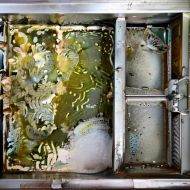
As a restaurant owner, you know all too well the importance of maintaining your grease trap. Not only do grease traps help protect both your pipes and commercial kitchen from potential sewer problems, but they also reduce odor as well as long-term operational costs by preventing harmful cooking liquids from overloading municipal sewers or treatment plant systems. Unfortunately, there is often an inclination to delay cleaning – or having it serviced at all – due to the cost involved and a general lack of knowledge about how dependent a restaurant’s success can be upon proper functioning equipment! However, this course of action could prove costly in the long run if clogged lines result in lesser productivity or even dangerous health risks for customers or staff. Thus, understanding why you should not delay having your grease trap regularly inspected and serviced is essential for business owners that wish to remain successful while simultaneously protecting both their patrons and employees alike.
What Is a Grease Trap and Why Should You Keep It Cleaned Out
A grease trap is an essential component for any establishment that deals with food preparation, cooking, or washing dishes. It is a plumbing device that catches grease and oil before it enters the wastewater system. Without a grease trap, the build-up of fats, oils, and grease can lead to blockages and backups in pipes, bad odors throughout the establishment, and expensive repairs. Generally, it is recommended that a grease trap is cleaned every three months or as frequently as needed depending on the business activities. A clean grease trap ensures that wastewater flows freely and it helps to maintain public health standards, as it reduces the risk of contamination through an efficient drainage system. Therefore, keeping a grease trap regularly cleaned is essential for the smooth running of your business.
How Neglecting Your Grease Trap Can Cause Major Problems
Neglecting your grease trap can lead to major problems that are expensive and time-consuming to fix. The grease trap plays an essential function in any commercial kitchen by capturing fat and oils from wastewater before it enters the sewage system, which can clog pipes, cause backups, and harm the environment. If you ignore your grease trap, you’ll face a host of issues, including foul odors, slow drainage, and potential health hazards. Grease buildup and blockages can also cause costly equipment failures and violations of local regulations. Therefore, regular maintenance, cleaning, and inspection of your grease trap are critical for preventing such problems and keeping your restaurant, hotel, or other facility running smoothly. Trust a professional service to keep your grease trap in top condition and avoid the headaches of neglect.
The Benefits of Regularly Cleaning Your Grease Trap
Maintaining a clean grease trap is not only important for maintaining a safe and hygienic environment, but it is also essential to ensure the efficient operation of your cooking equipment. Grease traps are designed to capture fats, oils, and greases from kitchen wastewater before it enters the plumbing system. However, these waste substances can accumulate quickly and create blockages, leading to unpleasant odors and potentially costly repairs. Regular cleaning of your grease trap can help to prevent these issues and prolong the lifespan of your kitchen equipment. Additionally, it can also help to ensure compliance with local environmental laws and regulations. So, don’t overlook the importance of regularly cleaning your grease trap –it’s a small price to pay for the many benefits it provides.
Who Should Be Responsible for Cleaning the Grease Trap
The proper handling and maintenance of a grease trap are essential for the smooth functioning of any establishment that deals with oily and greasy waste. Therefore, the question of who should be responsible for cleaning the grease trap has become a significant concern for many restaurants and other food service providers. Depending on the location, size, and type of establishment, the responsibility for cleaning the grease trap may fall on the owner, the employees, a professional cleaning service, or a combination thereof. Whatever the scenario, it is crucial to ensure that the cleaning is done promptly and regularly, to avoid any potential health hazards and regulatory fines. Keeping the grease trap impeccably clean requires vigilance and commitment, and it is undoubtedly a collective responsibility.
Tips for Keeping the Grease Trap Cleaner Longer
As a food service operator, you know that keeping your kitchen clean is crucial. One essential part of maintaining a hygienic environment is your grease trap. However, keeping it clean can be a hassle, and it’s easy for grease to build up and cause problems. That’s why it’s important to follow some simple tips to keep your grease trap cleaner longer. Regularly schedule cleanings, don’t pour oil or grease down drains, and install pre-filters to catch solids before they enter the trap. By implementing these measures, you can ensure your grease trap is working efficiently and effectively, and avoid costly problems down the road.
Other Considerations When It Comes to Maintaining a Healthy Grease Trap
Maintaining a healthy grease trap is crucial for the effective functioning of your commercial kitchen. However, there are other considerations to keep in mind beyond just regular cleaning and maintenance. One important factor is the type of cooking oil or grease being used in your kitchen. Some oils and fats can solidify quicker than others, leading to more frequent blockages in the grease trap. It is also important to properly dispose of food waste and other materials that can accumulate in the trap, potentially causing unpleasant odors or even health hazards. By taking these additional considerations into account, you can ensure that your grease trap operates efficiently, preventing costly repairs and keeping your kitchen running smoothly.
Taking care of your grease trap is not only necessary to keep your home or business clean and operating smoothly, but it can also save you time and money in the long run. From investing in regular cleanings and maintenance to being sure to schedule service as soon as you identify an issue, regular maintenance on your grease trap can be a major stress reliever. This will ultimately help ensure that systems last longer and cost less for repair over time. Above all, be sure to consult with an experienced provider of grease trap services to guarantee the job gets done right. Don’t let the added stress and expense from neglecting your grease trap become an ongoing cycle– take proactive steps today to maintain a healthy environment at your home or business. Visit this page for more information.
How to Choose a Moving Company
Affordability – One of the most important factors to consider when choosing a moving company near me is affordability. Make sure to get estimates from several different companies so you can compare pricing. Keep in mind that the cheapest option isn’t necessarily the best option—you’ll also want to make sure that the company you choose is reliable and has a good reputation.
Services offered – Another factor to consider is the services offered by the moving company near me. If you need help packing and unpacking your belongings, make sure to choose a company that offers those services. Some companies also offer storage options in case you need somewhere to keep your belongings before or after the move.
Experience – When entrusting your belongings to a moving company near me, you’ll want to make sure they have plenty of experience. Check out online reviews and ask friends or family members if they have any recommendations. The last thing you want is for your belongings to be damaged or lost during the move, so it’s important to choose a company with a good track record.
Conclusion:
These are just a few of the factors you should consider when choosing moving companies in Orland Park. By taking the time to do your research ahead of time, you can rest assured knowing that your belongings are in good hands.
Learning The Various Benefits Of Using Air Vent Covers For Home Interiors
Introduction
Air vent covers can be defined as wooden or metal grates, which cover ventilation holes in floors, ceilings, and walls. These air vent covers prevent any air from being blocked since they allow air proper air circulation inside a building. Additionally, vent covers also help control the amount of air released into a room while directing the flow of air in a specific direction.
Nowadays, you can find air vent covers in multiple types of sizes, designs, and types. But, before investing in one, be sure to learn the benefits that are well-described below in this comprehensive guide.
Benefits of using air vent covers
1) Helps in controlling the airflow inside your home
With the help of air vents, you will be able to control the amount of air you need inside a specific room or space within your home. For example, you may wish to use air vent covers inside your lounge where guests will arrive or inside your bedroom so that you can have a good night’s sleep. Ideally, an air vent cover will allow you to pass air through it fully or partially.
Therefore, if you are aiming to enhance the comfort inside your home, then air vent covers are a must for your HVAC system.
2) Helps in enhancing the interior décor of your home
Air vents can not only assist you in providing proper airflow and ventilation for your home but can also help in improving your home’s interior décor. Based on your home’s interior styling scheme, you can find air vent covers that will cater to your needs, since they come in different sizes, types, and designs.
3) Helps in lowering monthly energy bills for your home
Since you can control the amount of air that passes through an air vent cover, you will be able to essentially control the amount of stress that you will exert on your HVAC system. As a result, you will be to manage your monthly energy bills as well and thereby prevent any unnecessary loads on your HVAC system.
Therefore, if you want to reduce your carbon footprint, air vent covers are the way to go. Not to mention, an efficiently run HVAC system will have greater longevity and will require less maintenance in the long run, ultimately helping you to save more money and your precious time.
Conclusion
At the end of the heyday, there is no doubt that air vent covers are a practical method to control airflow while also covering the holes that are left from a ventilation shaft. Since traditional air vent covers stick out like a sore thumb, you can proceed to explore the wide range of new design options that are available nowadays.
Modern designs make it easier for air vent covers to seamlessly match the desired look of your home interiors. Not to mention, you will be able to create a unified look inside your home that will stay relevant for years to come.
How to Choose the Best Toilet Tissue Paper Manufacturer and Supplier
Your thought of initiating a toilet tissue paper business is unsurprisingly a great idea. As per expert outlook, the global tissue paper industry is likely to multiply faster than the last decade, due to its increasing demand among the new generation. The usage of varieties of tissue papers including toilet tissues is no more restricted to the home sector only but has been a must-have in healthcare, hotel business, tours, and travel due to the need of maintaining personal hygiene.
Even though you’ll find loads of business schemes on the web focused on paper tissue ventures, instead of investing in developing infrastructure, buying machines, hiring manpower, or procuring raw materials, working as a trader is quite a sensible idea to go ahead more dynamically from day one. And to start this highly profitable project, here’s a guide for you to choose the best manufacturer and marketer specializing in toilet tissue paper. The factors you have to check
Business Background
Rather than following the traditional way of going through business yellow pages, take Google’s assistance and you will be informed about major to medium manufacturers and suppliers of toilet tissue papers spread in the industry. Get through the business websites to know details about the company, their background, how long they’re working in the industry, their major clients, client comments, and what market reviews state. Check their presence in major social media platforms like Facebook, Twitter, and Linked which depicts the standing of the company, its business attitude, and all information that are essential for all those interested to work with them.
Product Range
There’s no denying that regardless of whether you like to begin as a stockiest, distributor or dealer of toilet tissue papers, you should be operating with complete range of products. Toilet papers are available in a wide variety from low grade to medium and premium standards which are categorized as one-ply, two-ply, and three-ply tissue papers. All higher grades except one ply typically come with waxing and with lotion contains that make them softer, relaxing, and soothing. Apart from white, they’re available in colors, and designs and also are especially perfumed. Make sure that the company is capable to meet your demand with all ranges of unbleached, chemical-free, and eco-friendly tissue papers. Considering your future expansion plan, have an eye on other paper products that it produces and supplies. This will help you to expand your product range while you don’t need to look for a second paper supplier.
Professionalism
As you begin with your chosen paper manufacturer and supplier, it’ll be your first objective to develop a professional and productive relationship with your parent company. But that becomes possible only if the company is well-responsive, quality-conscious, and committed. Once you communicate for the first time giving details of your project plan, financial strength, location, and what you expect from them, check how fast they reply. Reputable companies have websites where you can communicate directly or let them know about your interest. The way they respond to you is all that talks about a company’s professionalism and suitability to work with. Talk to some of their current business clients and evaluate their satisfaction level with the company’s product quality and services.
Price and Terms
Make a written communication through email and get details of product prices, discount structure on bulk pick-ups, taxes apart from mode, and terms of payment. Choose a company that takes responsibility for shipping and ensures secured delivery of products with their professional cargo company.
Evaluation of Samples
Meanwhile, never forget to vary the sample of various toilet papers can evaluate the quality and specialty of the products with market standards to avoid an unwanted hassle in the way of promoting the items.
What are the Protective Grease Trap Cleaning Solutions?
We all have heard the advice that you should not let grease and oil enter your kitchen sink. These fats, oils, and grease may solidify later and clog your pipeline. The damage is not only limited to your establishment. It can cause severe damage to the sewage and septic system. Every year a lot of municipal sewer overflows are caused due got improper removal of grease.
Grease traps prevent grease, oil, and fats from entering your septic or wastewater system. Hence, it is quintessential to install grease traps in restraints and industrial kitchens. However, just like any other equipment in your kitchen, Grease traps require regular cleaning and maintenance.
Let us discuss more grease traps and protective grease trap cleaning solutions.
1. Take care of your grease traps
The best way to keep your grease traps clean is to minimize the amount of grease, oil, and other particles entering your sink. It is always advisable to scrape the plates before putting them in the sink. Put up no grease signs near your sinks, and dishwashers in a commercial kitchen to remind your employees.
Also, make them aware of other preventive measures like not using hot water to wash dishes or pouring hot water down the drain. The employees should also be instructed to clean accidental spills as they may find their way into the drains. if the spills contain grease and it can impact the pipeline and sewage system. Hence, you need to take care of your grease traps. So that you don’t have to call grease trap cleaning service frequently.
2. Regular cleaning
To ensure that your grease traps are working at their best capacity you need to get them cleaned at regular intervals. The frequency of cleaning may differ for every enterprise.
Most restaurants and commercial kitchens need to call for grease trap cleaning service once every three months. However, you need to keep the activity level and the size of your grease trap in mind.
3. Call a Professional
Most restaurant owners take a DIY approach to cleaning. Remember, taking care of your grease traps is much more complex than it appears to be. You need to have the proper equipment to clean the grease traps.
Without proper equipment and protective gear, you can be putting your and your employee’s life at risk. Also, A tiny mistake in the cleaning process can cause significant damage to the equipment and you need to incur heavy repair expenses.
There are numerous advantages of a professional grease trap cleaning service. There is a regulation that guides the proper disposal of grease, oil, and other waste. Failing to adhere to these principles can cost you in the form of penalties and fines. The professionals can take care of the cleaning process and help with proper waste disposal.
These are some of the protective cleaning solutions for your grease traps.
Importance of Air Conditioner Maintenance
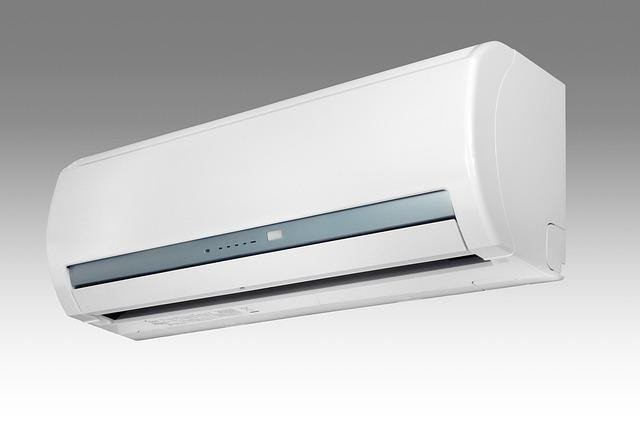
In a place like Jacksonville, human life will be unthinkable without the use of air conditioners all the time. The hot and humid climatic conditions will deter pleasant human life. Hence, there must be air conditioners in all interior spaces where you will have to move around. However, even when you install modern-type, technically perfect air conditioners, they are bound to get damaged. For that matter, anything in this world is subjected to wear and tear.
Besides, when you use something frequently, it is natural that the item will become defective. This fact is all the more true as far as devices such as air conditioners are concerned. This situation demands regular maintenance as regards the air conditioners you use. You must not use greenhorn methods or engage a professional AC maintenance service Jacksonville FL provider. A search through Google will provide you with a complete list of the top players.
Increase the Work Efficiency: As is the case with any mechanical, electrical, or electronic device, regular maintenance will enhance the operational efficiency of the unit. Technicians will clean the air conditioner thoroughly, and this process will make the air conditioner fresh. Besides, they will replace the worn-out parts. Hence, there will be an augmentation as far as the working efficiency of the unit is concerned.
More Life: In general, the life span of air conditioners can be from five to ten years, provided you give proper and continuous maintenance. Yet another benefit of giving regular maintenance is that there will not be frequent breakdowns. Frequent breakdowns will create a mess, and it will indeed be a nuisance.
You can Save Money: Moreover, if the system stops working, you must repair it on the dot. If this happens frequently, it means a lot of money. Hence, frequent maintenance will save you money. That said, the maintenance work must be precise and perfect.
Purity of Air: Regular maintenance means a thorough cleaning of the external and internal areas of the unit. There will be a lot of debris, rust, and dust particles inside the air conditioner. When the system gets regular maintenance, there will not be any of these unsolicited and unhealthy particles inside. Hence, the air circulated within the related space will be pure and hygienic.
Health Problems: You will be prone to various health problems if you don’t maintain the air conditioner regularly. The airflow will become damaged. When this happens, there will not be proper air circulation. There will not be any fresh air, and all the air pumped into the space will be contaminated. Remember, dirty filters will deter the movement of fresh air. The air that comes through such filters will be contaminated with bacteria and other fungi. Contaminated air will cause diseases like bronchitis, asthma, etc.
Avoid Noise & Bad Smell: Perfect maintenance is a must as far as air conditioners are concerned, and this service must be at the proper times. When you avoid or postpone the required maintenance task, the unit will start to produce horrible sounds. Besides, as the air circulation will not be proper, there will be a lousy odor throughout the interiors. This sound and smell will be unbearable and will spoil your pleasant mood. The best practical way to avoid such a situation is to give due care and attention to the air conditioners. The best solution for this is to hand over the maintenance task to a specialized AC maintenance service Jacksonville FL Company. Their professional proficiency will make things right for you.
AC maintenance service Jacksonville FL – Select a Skilled Company
The company you hire must have all the modern equipment and skilled and certified employees. Besides, they must be technically perfect and thorough regarding the latest technological advancements. You must make sure that the employees of the AC maintenance service Jacksonville FL Company are certified and factory-trained. The management must give you a guarantee for their work. Many top companies will be ready to give one year warranty. Preferably, there must be flat-rate pricing. Above all, the employees must have cordial behavior. They must clean the area perfectly after finishing their work.
What is Septic Tank: Working, Components, Design Criteria, Importance, Advantages & Disadvantages of Septic Tank
A septic tank is an underground chamber through which sewage or wastewater passes. It happens to be a primary sedimentation time that comes with large detention periods ranging from 5 to 12 hours.
These tanks can range from 500 gallons to 1000 gallons. The large tank usually measures nearly 1000 gallons, whereas the smaller tank measures about 500 gallons. In general practice, these septic tanks consist of two distinctive chambers. These changes are the treatment chamber and the final chamber. The inlet follows the treatment chamber, whereas the outlet happens to be in the final chamber. All the working process takes place in the treatment chamber. In this chamber, biochemical processes occur.
Working Mechanism
The solid particle of the switch settles at the bottom of the tank. The tank design prevents oxygen from entering the bottom of the tank. It promotes the growth of anaerobic bacteria. These bacteria help to digest organic matter. Due to the process of decomposition, the particles move outward as they become lighter.
The wastewater present in the septic tank gets discharged with the help of pipes onto the forest surface. The surface helps to treat the best water while naturally removing harmful nutrients, viruses, or coliform bacteria. Also, you can choose septic companies near me to receive the benefits of cleaning septic tank services.
Components Of Septic Tank
The different components of septic tanks are:
● Working chamber
● Inlet pipe
● Baffle wall
● Outlet pipe
● Roofing slab
● Ventilation pipe
Design Criteria
The design of the septic tank depends upon the expected number of uses. It is one of the general practices that require the removal of sludge every 2 years. The liquid capacity of the tank should be between 130 liters and 170 liters per head.
The small residential owners must adopt the 130 liters per head tank capacity. Moreover, the septic tank chamber consists of cement mortar and brick walls. The thickness of the wall should not be less than 9 inches. One must not forget to add water-resistant admixtures.
Importance Of Having Septic Tank
The Septic tank treats the switch efficiently before discharging into the environment. It helps to prevent pollution and environmental degradation. However, one must consider septic companies near me for the safe disposal of the night soil.
Advantages
A homeowner can experience various advantages of having a septic tank. Some of these advantages include:
● The septic tank decomposes the ways using a natural method. Good for the environment.
● The septic tank has a long life span. Hence it can last for several years.
● These tanks are efficient and help to purify the wastewater. The process helps one to use the effluent to use for groundwater recharge.
● The cost of maintenance of the septic tank is less. Every rural area must indulge in the septic tank.
Disadvantages
The maintenance and repairs are the only responsibilities of the homeowner to maintain the septic tank. Here are some disadvantages of having a septic tank.
● Out of all the disadvantages, the main con of septic systems is the need for maintenance. The maintenance of the sewage system should be footed and managed by the city. However, the cost of the maintenance must be paid by the homeowner. After every 4 to 5 years, the septic tank must be pumped. This process helps to prevent overflow or backup.
● Lack of maintenance can produce a foul odor. It can aid the breeding of flies and mosquitoes.
● Sometimes the tank must get replaced. Unlike the sewer system, the septic tank happens to lack the capacity to handle switch amounts above the threshold level. Consequently, the septic system can fail if it is overloaded with sewage. It can call upon a difficult and costly clean-up process.
● A septic tank is not suitable for our congested area.
● During the rainy season, homeowners may face sewage overflow.
Septic tanks happen to be one of the integral parts of any property. Though there are advantages and disadvantages of having a septic tank, the homeowners would agree upon the pros outweigh the cons.




